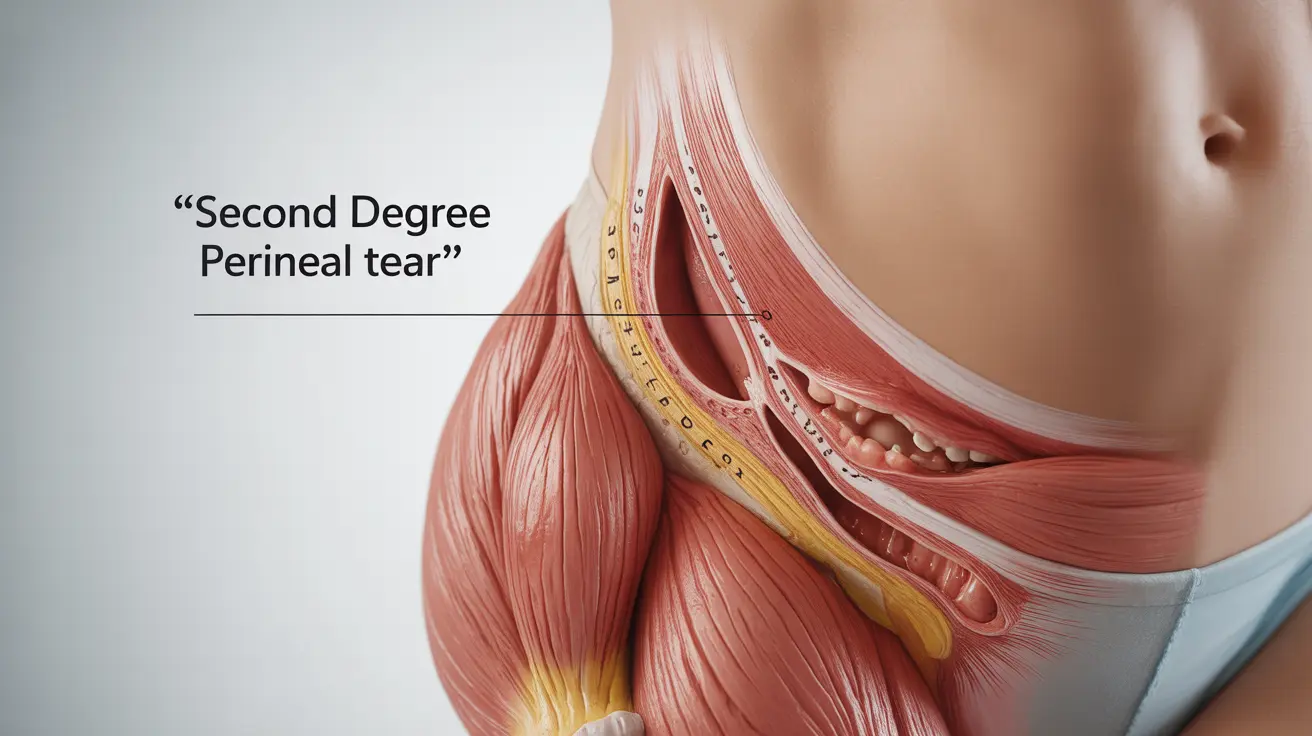Experiencing a tear during childbirth can be concerning for new mothers. Second degree tears are a common occurrence during vaginal delivery, affecting many women during the birthing process. Understanding what these tears are, how they're treated, and what to expect during recovery can help ease anxiety and prepare you for optimal healing.
This comprehensive guide will walk you through everything you need to know about second degree tears, from identification to recovery, helping you navigate this aspect of childbirth with confidence and knowledge.
What Is a Second Degree Tear?
A second degree tear is a perineal injury that occurs during childbirth, extending beyond the vaginal lining and skin to affect the underlying muscles of the perineum. These tears are deeper than first degree tears but don't involve the anal sphincter muscles. They typically require medical attention and stitches for proper healing.
Causes and Risk Factors
Several factors can increase the likelihood of experiencing a second degree tear during childbirth:
- First-time vaginal delivery
- Rapid delivery
- Large baby (over 8.5 pounds)
- Assisted delivery (forceps or vacuum)
- Position of the baby during delivery
- Extended pushing phase
Immediate Treatment After Delivery
When a second degree tear occurs, your healthcare provider will take immediate steps to repair the injury:
- Careful examination of the tear
- Local anesthetic administration
- Layer-by-layer suturing
- Sterile cleaning of the area
- Initial wound care instructions
Recovery Process and Timeline
The typical recovery period for a second degree tear ranges from 2-3 weeks, though complete healing may take longer. During this time, you can expect:
Initial Recovery (First Week)
The first week typically involves the most discomfort and requires careful attention to hygiene and wound care. You'll need to:
- Keep the area clean and dry
- Change sanitary pads frequently
- Use prescribed pain relief
- Begin gentle movement as tolerated
Ongoing Healing (Weeks 2-3)
As healing progresses, you'll notice gradual improvement in comfort and mobility. Continue following care instructions and watch for any signs of complications.
Managing Pain and Discomfort
There are several effective strategies for managing discomfort during recovery:
- Ice packs for the first 24-48 hours
- Sitz baths several times daily
- Over-the-counter pain medication (as approved by your healthcare provider)
- Proper positioning when sitting or lying down
- Gentle pelvic floor exercises when cleared by your provider
Warning Signs and Complications
While most second degree tears heal well, it's important to watch for potential complications:
- Increased pain or swelling
- Unusual discharge or odor
- Fever or chills
- Separation of stitches
- Difficulty with bowel movements
- Persistent bleeding
Frequently Asked Questions
What is a second degree tear during childbirth and how do you know if you have one? A second degree tear affects the vaginal tissue and perineal muscles but not the anal sphincter. Your healthcare provider will identify and diagnose the tear immediately after delivery during a thorough examination.
How is a second degree tear treated immediately after delivery? The tear is repaired through careful suturing under local anesthetic, typically performed shortly after delivery. The procedure involves closing each layer of tissue separately to ensure proper healing.
How long does it take to recover from a second degree tear after birth? Most women recover within 2-3 weeks, though complete healing may take up to 6 weeks. The initial discomfort typically improves significantly after the first week.
What should I expect in terms of pain and discomfort with a second degree tear, and how can I manage it at home? You can expect moderate discomfort, particularly during the first week. Management includes ice packs, sitz baths, proper hygiene, and approved pain medication. Movement may be uncomfortable initially but should improve gradually.
What are the warning signs of infection or complications with a second degree tear, and when should I contact my doctor? Contact your healthcare provider if you experience increased pain, fever, unusual discharge, foul odor, or separation of stitches. These could indicate infection or healing complications requiring prompt medical attention.




